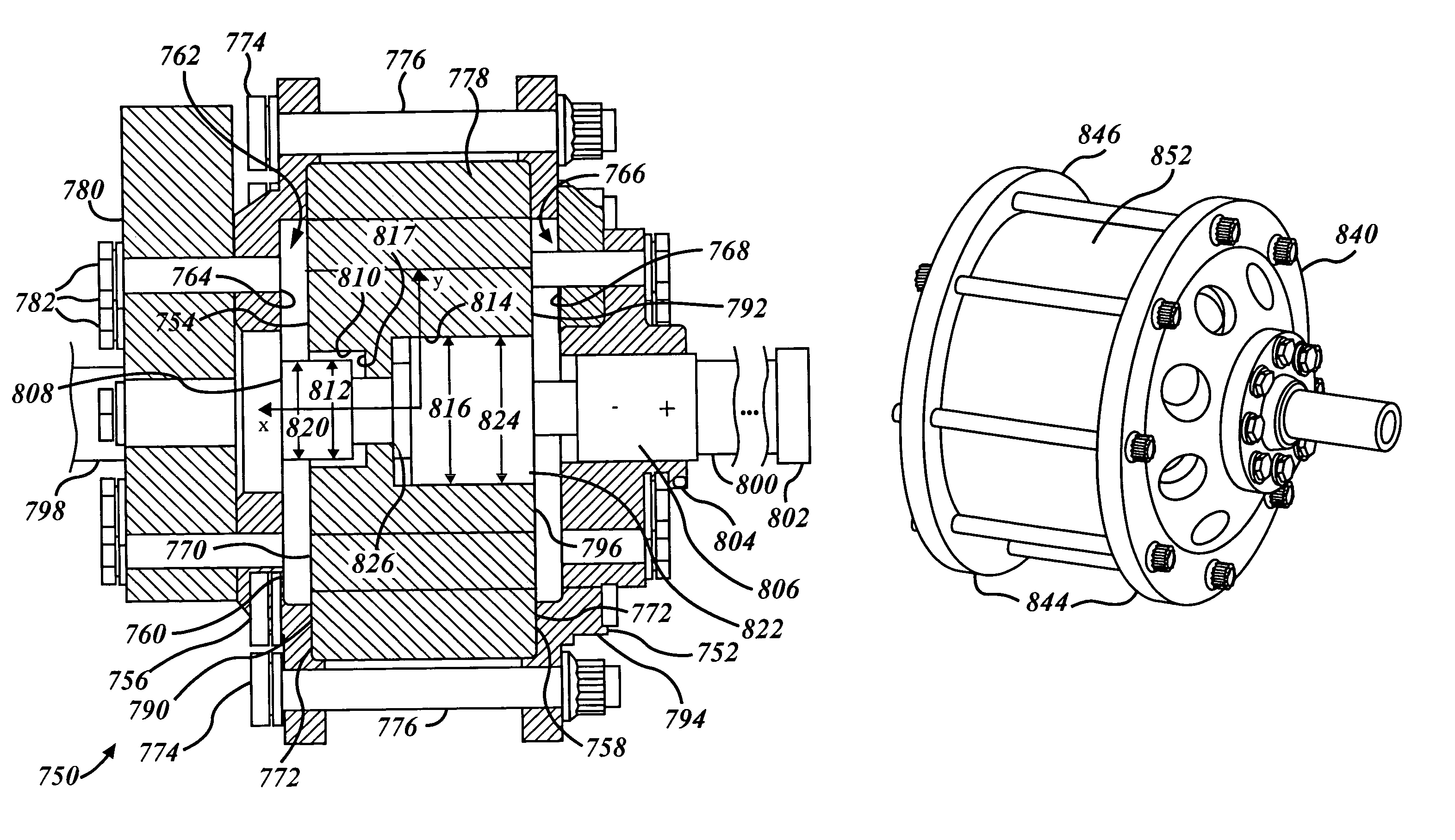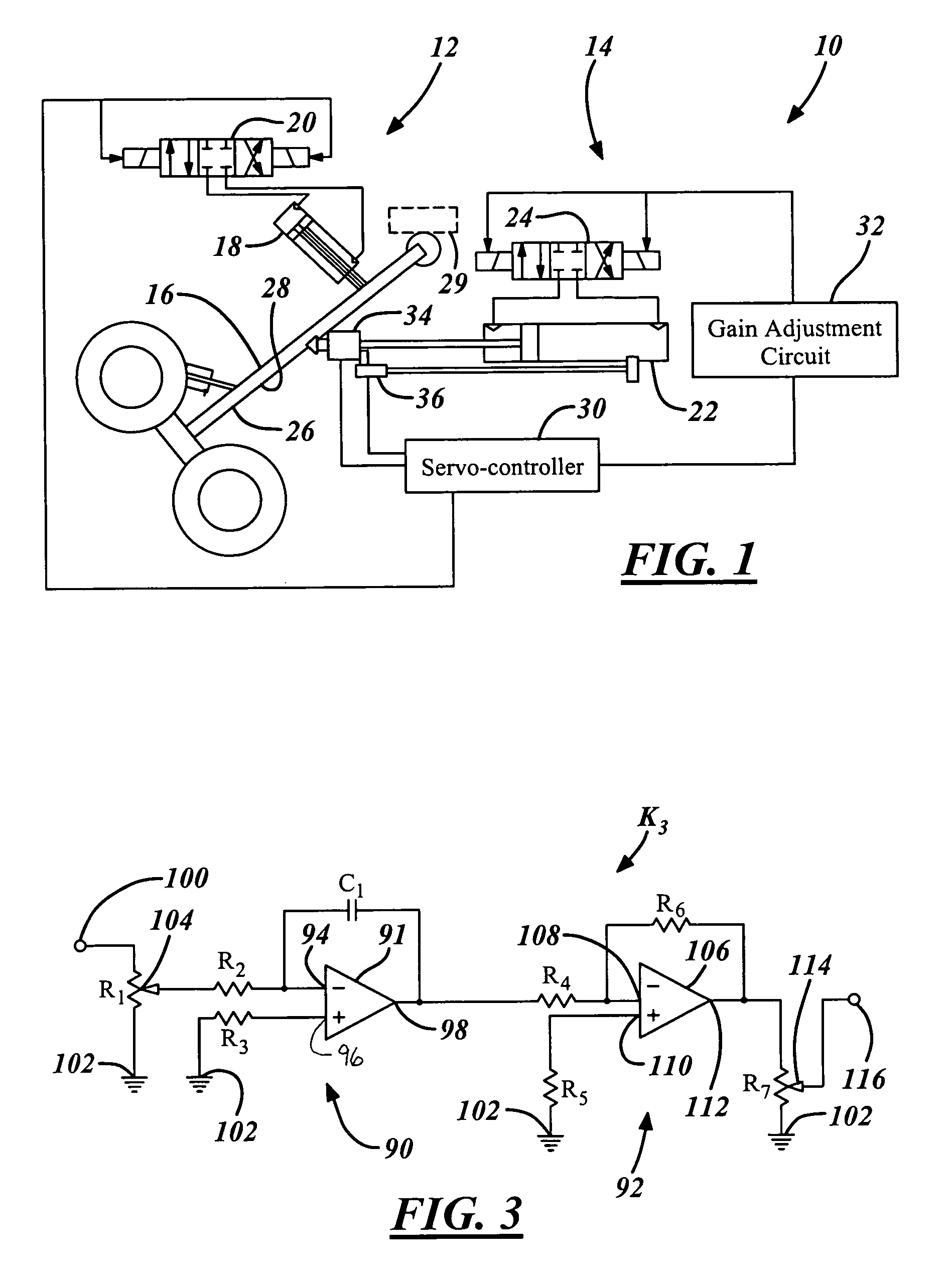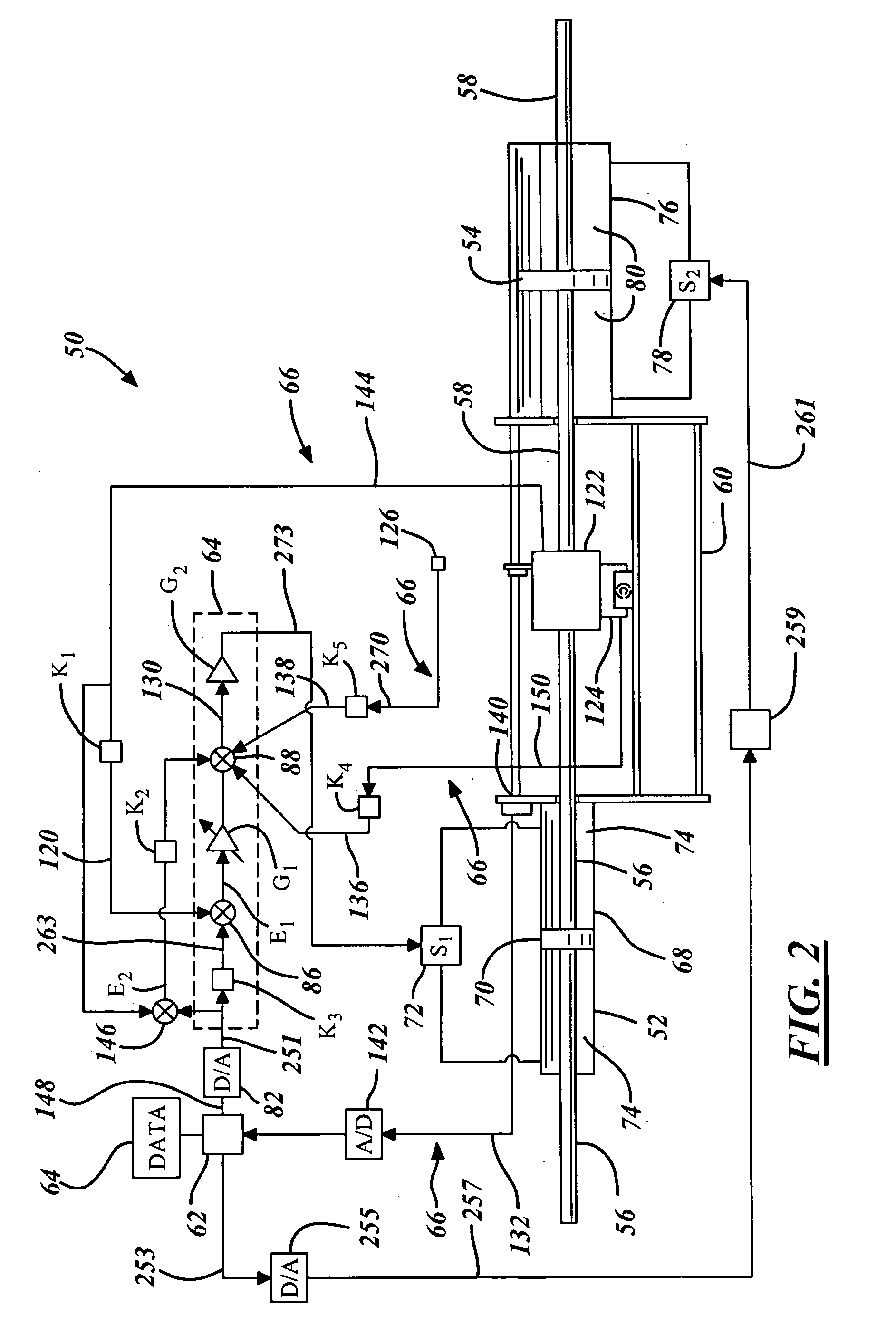Compliant coupling force control system
a coupling force and control system technology, applied in the direction of electric programme control, force/torque/work measurement apparatus, instruments, etc., can solve the problems of high cycle rate, difficult to follow, accelerated fatigue, etc., to reduce control errors, accelerate fatigue, and accelerate the cycle rate
- Summary
- Abstract
- Description
- Claims
- Application Information
AI Technical Summary
Benefits of technology
Problems solved by technology
Method used
Image
Examples
Embodiment Construction
[0061]One technique of reducing force transients in a hydraulic powered system is to add a passive compliant mechanism between a servovalve and an actuator of a force control system. This technique uses accumulators on force actuator ports of the system. The compliance, however, lowers the phase margin of the hydraulic system. As a result, the instability reached using the stated technique while meeting increased gain requirements, limited the effectiveness.
[0062]Another technique used to reduce force transients in a hydraulic powered system is to increase the gain of a force control system. In order to increase the gain, and avoid instability, compensation is added to the control loop using numerous methods. These methods do not provide a substantive reduction in the amplitude of force transient phenomena.
[0063]Yet another technique used to reduce force transients in a hydraulic powered system is to add damping to a force control actuator by connecting the ports thereof through a c...
PUM
 Login to View More
Login to View More Abstract
Description
Claims
Application Information
 Login to View More
Login to View More - R&D
- Intellectual Property
- Life Sciences
- Materials
- Tech Scout
- Unparalleled Data Quality
- Higher Quality Content
- 60% Fewer Hallucinations
Browse by: Latest US Patents, China's latest patents, Technical Efficacy Thesaurus, Application Domain, Technology Topic, Popular Technical Reports.
© 2025 PatSnap. All rights reserved.Legal|Privacy policy|Modern Slavery Act Transparency Statement|Sitemap|About US| Contact US: help@patsnap.com



